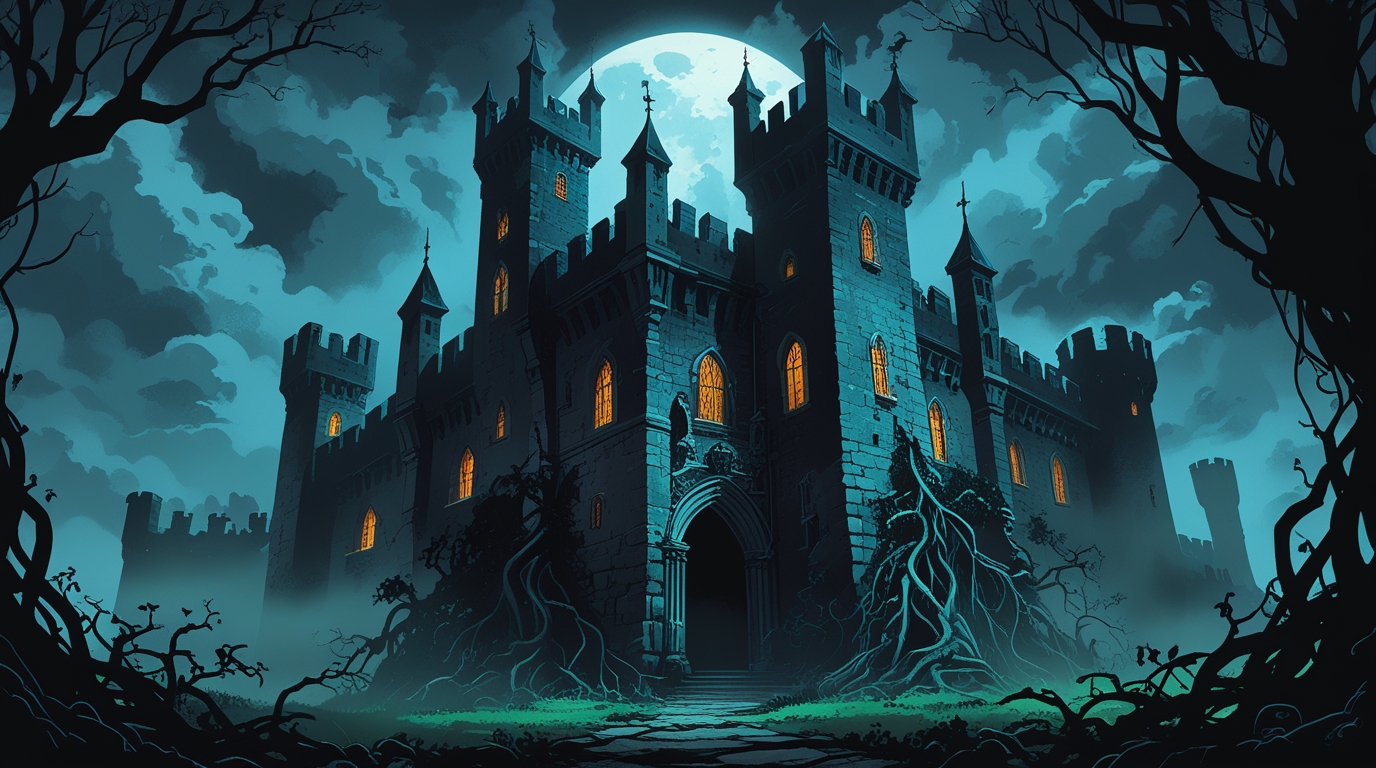
Not all game worlds have to be happy and bright. Dark and Gothic art is characterized by shadows, ruins, and eerie beauty. This art is ideal for telling certain stories. Popular in the mystery and horror genres, its visual aesthetic has long captivated players looking for depth and atmosphere.
Let’s take a look at what gothic art is in games, why it works so well, and how to use it to deliver emotionally lasting experiences.
What is dark and gothic game art?
Gothic art draws inspiration from medieval architecture, romanticism, and the supernatural. It is often seen in games in certain details.
- Color palettes: shades of black, gray, red, and purple.
- Sharp contrasts: flickering candles in the vast darkness.
- Exquisite details: ornate cathedrals, wrought iron, stained glass, and decayed stone.
- Symbolism: death, decay, mystery, and beauty intertwined.
Gothic artwork invites gamers to explore worlds that are both frightening and alluring, evoking a sense of terror and curiosity.
Why Gothic Art Is So Good for Horror and Mystery Games
1. Instant Atmosphere
The first glance sets the tone. The gloomy lighting and detailed architecture of Gothic visuals instantly signal to players that they have entered a world of mystery and danger.
2. Emotional Depth
Dark art allows players to experience more than just fear. It evokes admiration, awe, and melancholy. The plot maintains the interest and fascination of the players through this emotional layering.
3. Strong Narrative Support
Gothic visuals enhance the narrative. A ruined dynasty can be represented by a crumbling castle, while hopelessness can be represented by a misty cemetery. The art itself becomes a vehicle for storytelling.
4. Timeless Appeal
Game designers are still influenced by Gothic aesthetics in games like Castlevania, Bloodborne, and Hollow Knight. The combination of beauty and horror never goes out of style.
How to Use Dark & Gothic Art Effectively
1. Balance the details
Too many shadows can obscure the beauty of the world. Carefully placed light sources contrast with the dark background, highlighting important components.
2. Play with texture
The textures of stone, metal, and fabric define the Gothic aesthetic. To add visual depth, use highly detailed surfaces and contrast them with smooth or distressed materials.
3. Use lighting as a storytelling tool
Lighting in this genre works not only visually, but also adds emotion. The flickering of candles, moonlight, and lightning strikes all add rhythm and tension to scenes.
4. Control the palette
Avoid oversaturation. Gothic art thrives on limited, deliberate colors. Instead of detracting from the mood, each shade should enhance it.
5. Combine classic and modern techniques
To add realism without compromising authenticity, use modern digital effects, such as volumetric lighting, particle fog, and animated shadows, to enhance classic Gothic themes.
Common Mistakes to Avoid
- Scenes that have too many dark elements are visually bland.
- Using generic “creepy” clichés instead of creating an authentic atmosphere.
- Ignoring readability: The environment should still be simple for gamers to traverse and comprehend.
Final Thoughts
Dark and gothic art is more than just aesthetics; it’s an emotional language. It allows games to tell stories that feel ancient yet alive, eerie yet beautiful. When applied properly, it turns mystery and horror games into enthralling voyages through terrifying, amazing, and beautiful realms.
At Melior Games, our artists know how to capture the perfect balance between light and shadow, ensuring that each scene tells a story that stays with players long after the game is over.




